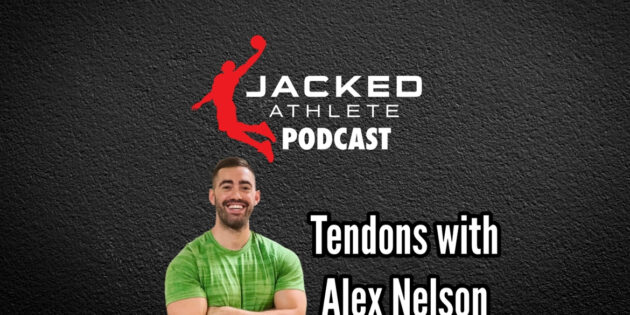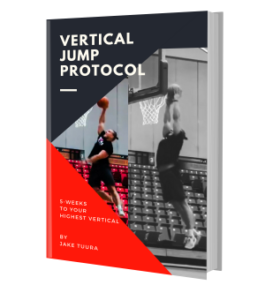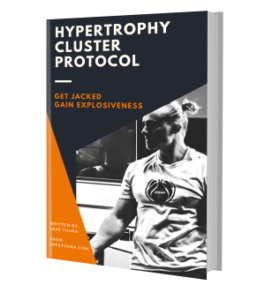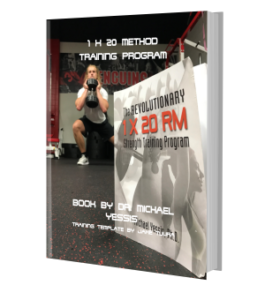https://podcasts.apple.com/us/podcast/jacked-athlete-podcast/id1462537296?i=1000700933250
Isometrics: “It’s not magic and there’s going to be some people that I think respond really well. And I think other population that’s just not going to respond too well and can’t even make them worse.”
“When programming for people, I don’t necessarily think about the tendon all that much. I think about the muscle function and the nervous system function.”
“When someone has tendinopathy, there’s basically a change in the cell phenotype and the activity levels of the cell. And the cell essentially becomes hyperactive and very sensitive.”
“I think that we do eventually need heavy load… but I think heavy is maybe applied too soon and kind of going back to the point that the cell is a little bit hyperactive. We need to calm it down. We need to allow some of that sensitivity to decrease a little bit. And then for me, like reflecting on how do we train the muscle versus the tendon, that makes more sense to allow the tendon to calm down, but we can still do like slow, concentric, slow, eccentric, and get a good muscle pump essentially. Hammer out the muscle, get some good stimulus there, get some nervous system adaptations, and then that’s eventually going to drive tendon changes but also let the tendon calm down in the early stages”
“It’s trying to balance that thought process of using heavy loads versus calming down and decreasing the sensitivity. And I think a lot of times probably we have to use pain as our best guide in a lot of these situations. Like I know there’s a lot of limitations to that, but we still do have to use pain as our guide.”
“In the early stages, it could be beneficial to keep pain in check and do lighter loads more frequently.”
Early on: “Calm the tendon down while still trying to provide a good adaptation to the muscle and the nervous system… you can use increased frequency every day even to kind of build it up. And then once you get to a point where you can potentially use heavier loads and the athlete can tolerate that, then you can back off the frequency. Then maybe you’re training two or three times a week with the heavy loads and just resting in between.”
“The nervous system and muscle deficits persist first before someone even has symptoms. So there’s muscle weakness present and that the tendon is trying to kind of buffer the loads that are placed on the muscle, but since the muscle can’t help out as much, there’s more stress on the tendon and maybe that tendon is overloaded for the given demands and the preparedness level. And so the tendon’s overloaded and that stress does increase compliance of the tendon, making it not as stiff.”
“I’ve worked with quite a bit of power lifters that have it. Patellar tendinopathy, maybe more so quad tendinopathy in power lifters… I think a lot of it does come down to just the volume and intensity of their squats.”
“I’ve had a few power lifters, okay, they’d hit their top set at 93 % and then they do back offsets at 85%, basically going to failure and they would do like three, four, five of those and then, you know, then they’d have a heavy deadlift after it. So I think a lot of it comes down to just managing the fatigue, managing the load, of course. And for a lot of the power lifters, what I found to be effective.”
Patellar Tendinopathy: “Athletes that can squat 500 pounds and then you get them on a single leg leg extension and it’s either like very, very symptomatic or super weak.”
“I do always add in the the isolated leg extension exercises for quad and patellar tendinopathy and I would probably shift a lot of that that volume and and allocate it… Like as I mentioned instead of four or five back offsets for squats, maybe I would do one back off set and then the rest of the volume for quads that day would come from the leg extension then I think a lot of those athletes are surprised because they can still get like three, four sets of leg extension if needed. And it doesn’t necessarily fatigue them or they don’t feel quite as beat up.”
Tendon pain: “I think that it’s a change in something, change in workload, change in intensity, and then the biomechanical factors are important.”
Mismanaged tendons: “They would go to the doctor with knee pain or whatever. Doctor would say, okay, looks good, let’s take an x-ray, right? X-ray would show nothing. All right, you’re fine. Why don’t you rest it for two, three weeks? Come back and see me if it doesn’t get any better. And you can take the NSAIDs, can try these stretches, right? They’d give a few exercises on a handout. And all right, come back and see me if it doesn’t get better. All right, person would go see the ortho or whoever it was again, four weeks later. Yeah, it’s not getting any better, doc. And then they’d say, okay, well why don’t you go to physical therapy? And so, then at that point in time, they’re already like four to six to eight weeks into the injury and all they’ve done at that time is rest. Maybe they’ve even gotten a cortisone injection. Maybe they went to Reddit and tried to find some different exercises that made things worse. So, that’s just, that’s what I saw so frequently and I don’t, like I don’t blame those providers. I think they were like very well intentioned of course. It’s just that there’s still a lot of education that needs to be done and you know education for the person going through it that is going to be beneficial.”
“The physical therapist is well intentioned, but they’re doing straight leg raises and clams for 12 weeks and they’re a soccer player that only really gets pain when they’re playing soccer, right? Like not even during day to day and they’re doing these low level exercises that are just not adequate for them at that time.”
“A lot of these physical therapy centers, they have yellow TheraBands, maybe they got a black TheraBand, and they got a 20 pound dumbbell, that’s it. And so, yes, you can get creative, but it’s just hard. They don’t have a lot of the equipment to manage. Just your average Joe that wants to get back to just being active.”
“In the past, I was probably more black and white in terms of like imaging doesn’t matter. It doesn’t correlate to pain. It doesn’t correlate to outcomes. And I think I’m wrong about that. You know, now as I’ve learned more, like obviously tendon structure does matter for function. Especially for these elite athletes, you need a healthy tendon, the tendon structure matters.”
“There still is like a really complex relationship between what the image finds and someone’s symptoms. So someone can find something really scary on the MRI and have zero symptoms and vice versa.”
Alex’s links: https://stan.store/training_with_tendinopathy
Alex’s Instagram: https://www.instagram.com/training_with_tendinopathy/



